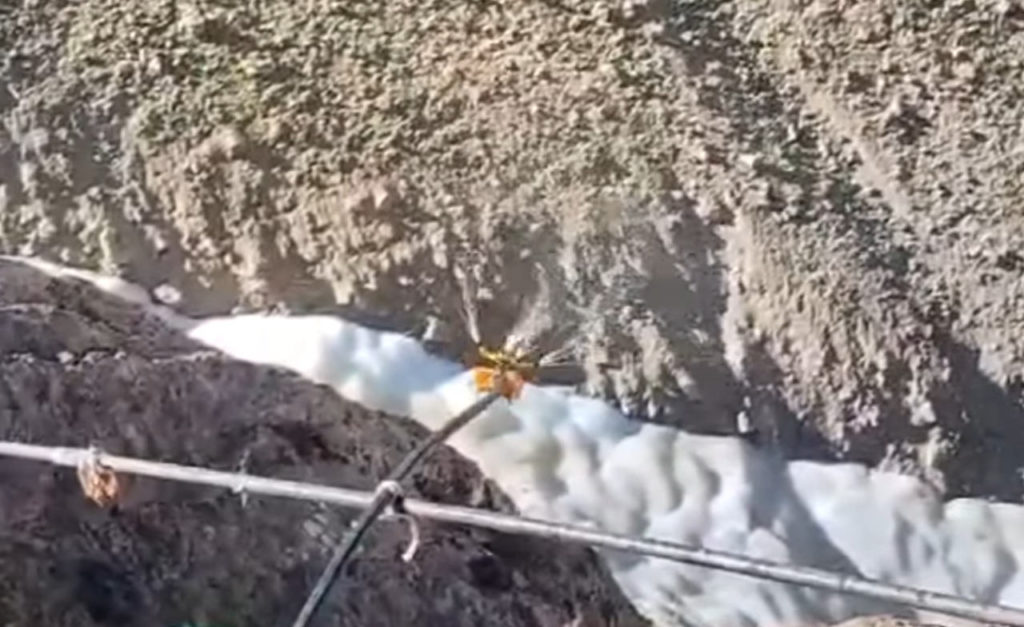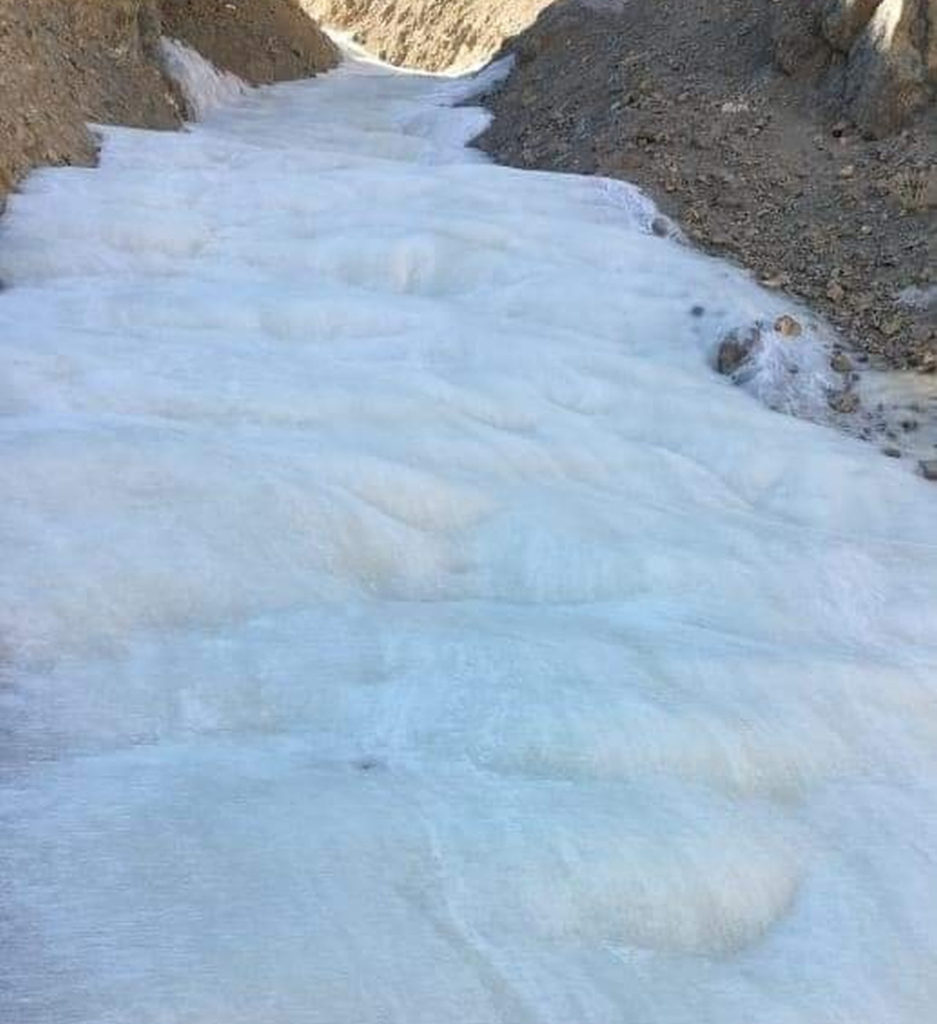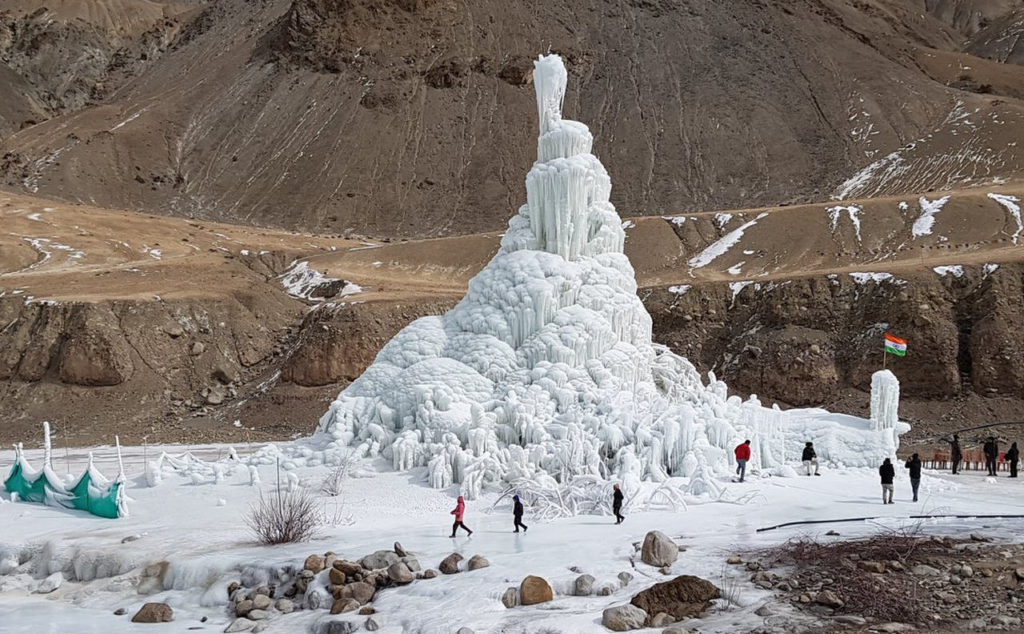Youth-led initiative inspired by Ladakhi engineer Chewang Norfel promises relief from summer irrigation woes
In the face of mounting water scarcity challenges exacerbated by climate change, the resilient residents of Hango village in Kinnaur district, Himachal Pradesh, have pioneered a groundbreaking solution to combat summer irrigation woes. Drawing inspiration from the innovative work of Indian civil engineer Chewang Norfel in Ladakh, the youth of Hango village have successfully created artificial glaciers using a unique method that could potentially transform water availability in the region.
Traditionally reliant on snowfall for summer irrigation, many areas in Kinnaur have witnessed a decline in water resources due to climate change. In response to this pressing issue, the forward-thinking residents of Hango village decided to take matters into their own hands. By implementing Norfel’s technology of creating artificial glaciers, they devised a system involving the diversion of a small stream into the valley and the construction of a check dam to regulate the flow of water.
The method has proven to be highly effective in addressing water scarcity, with artificial glaciers contributing to enhanced groundwater recharge, the revitalization of waterfalls, and a sustainable source of water for agricultural purposes. This homegrown solution not only offers relief from the perennial water shortages faced by the district but also showcases the potential for communities to adapt and thrive in the face of environmental challenges.
The success of Hango village’s initiative is particularly significant given the prevalent water crisis during the summer months in the cold desert region of Kinnaur. In the absence of sufficient water for irrigation, villagers are often compelled to purchase water and transport it via tanker, resulting in a strain on resources and finances. The artificial glaciers, however, promise a sustainable and cost-effective alternative, offering a lifeline to farmers grappling with the persistent challenge of water scarcity.
The youth of Hango village hope that their innovative approach will inspire other communities facing similar issues to explore and implement creative solutions. By adopting and adapting the technology pioneered by Chewang Norfel, they have not only secured their own water future but have also positioned themselves as trailblazers in the fight against climate-induced water scarcity. As the positive impact of their initiative becomes evident, the success story of Hango village serves as a beacon of hope and inspiration for communities grappling with the adverse effects of climate change across the globe.
Building on the success of Ladakh’s innovative water conservation techniques, notably Sonam Wangchuk’s ‘Ice Stupa’ project, the story of Hango village finds resonance. Ladakh, a cold desert facing similar challenges of frozen soil and low temperatures, has been at the forefront of pioneering solutions. Wangchuk’s project involves storing winter water in the form of conical-shaped ice heaps, known as ice stupas, which melt during the summer, significantly increasing water supply for crops.
Inspired by the observation of ice lasting longer in shaded areas, Wangchuk’s innovation has proven successful in Ladakh’s subarctic climate. This approach aligns with the ethos of adapting traditional wisdom with modern engineering to address critical issues like water scarcity. Ladakh’s Ice Stupa initiative, which won Sonam Wangchuk the Rolex Awards for Enterprise in 2016, underscores the transformative power of community-led innovations in building a sustainable and resilient future.
The Ice Stupa project showcases the utilization of wind, hydro, and solar power potential in Ladakh to create artificial glaciers, providing a sustainable water source for agriculture, plantations, and more. Ladakh’s Ice Stupa Competition, initiated in 2019, further highlights the commitment to promoting artificial glaciers and saving water for irrigation. As the number of ice stupas being built continues to increase, Ladakh’s pioneering efforts stand as a testament to the effectiveness of innovative solutions in mitigating the impacts of climate change.
In the pursuit of water conservation, both Hango village in Kinnaur and Ladakh exemplify the potential of community-driven initiatives to address the challenges posed by climate-induced water scarcity. Through their respective innovations, these regions offer hope and inspiration for communities worldwide grappling with environmental changes. The combined efforts of such trailblazing initiatives underscore the significance of local action in building a sustainable and resilient future for generations to come.






